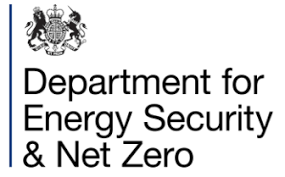Net zero and the energy transition have taken another step forward with the publication of new guidance for the carbon storage industry.
The North Sea Transition Authority (NSTA) published (28 March) two sets of guidance which will help the developing carbon storage industry prepare for first injection.
The Government last year set out its vision for the carbon storage industry pledging up to £20billion investment and suggesting that it has the potential to store the carbon equivalent of taking 6 million cars off the road, and support 50,000 jobs, by 2050.
The Guidance for Measurement of Carbon Dioxide for Carbon Storage Permit Applications provides licensees with information on NSTA expectations regarding the proper measurement of CO2 being injected in a storage site and suggestions on how that can be achieved.
It is important that injection flow rates are accurately determined, as this information is used in modelling the behaviour of the CO2 in the reservoir.
In addition to the overall volume being injected, the exact composition of the gas is also measured. This ensures that the correct payment is made under the Carbon Trading Scheme.
The second set of guidance published at the same date, Requirements for the definition of a carbon storage site, storage complex and hydraulic unit provides clarity on determining the extent of subsurface storage site and focus for licensees on the area they must manage to prevent/detect leakage.
This piece of guidance advises licensees of the requirement to provide precise definitions of the spaces in which carbon dioxide will be stored and the surrounding areas that it must be contained within.
This precise definition is required so that any deviations from the expected CO2 movement and containment are clearly identifiable so that preventative or remedial action can be taken. The NSTA does not instruct independent businesses on how they should operate, but planned monitoring for such events is a requirement for each carbon storage application.
The guidance will immediately help the licensees of the Track 1 clusters at Hynet and Northern Endurance, and Track 2 at Acorn and Viking, which are the most far advanced projects, as well as new licensees.
The last year has seen a number of significant steps forward in developing the UK’s CO2 Transportation and Storage industry with:
The NSTA awarding 21 licences in 2023 after running the UK’s first-ever carbon storage licensing round
Establishment of a dedicated NSTA carbon storage development team to work with operators in the growing sector.
Significant progress being made by the Track 1 & 2 projects on their permit applications with decisions on 4 Track 1 applications expected to be taken in 2024.
A consultation to determine what carbon storage data should be shared and to what timescales is also underway and will assist the development of future sites.
Alistair Macfarlane, Head of NSTA Carbon Storage Development Team, said:
“The carbon storage industry is a vital part of the UK’s aim of reaching net zero greenhouse gas emissions by 2050 and the NSTA has a key role to play in achieving that ambition.
“The guidance we have published today, alongside the enormous quantity of work we have devoted to developing an efficient regulatory regime is evidence of the importance we place on the industry and our determination to support its success.”
source: nstauthority.co.uk


Comentários